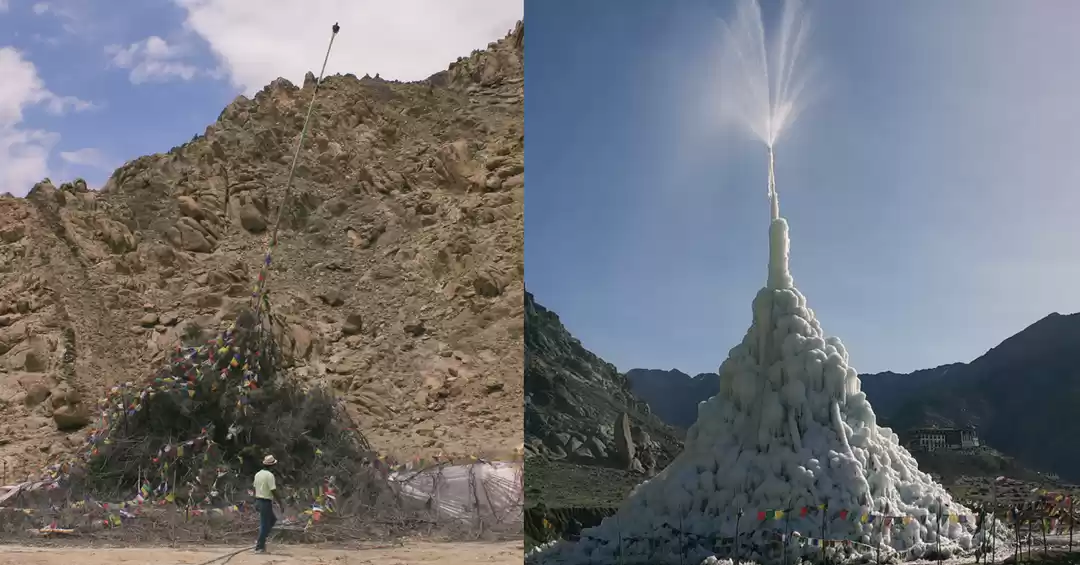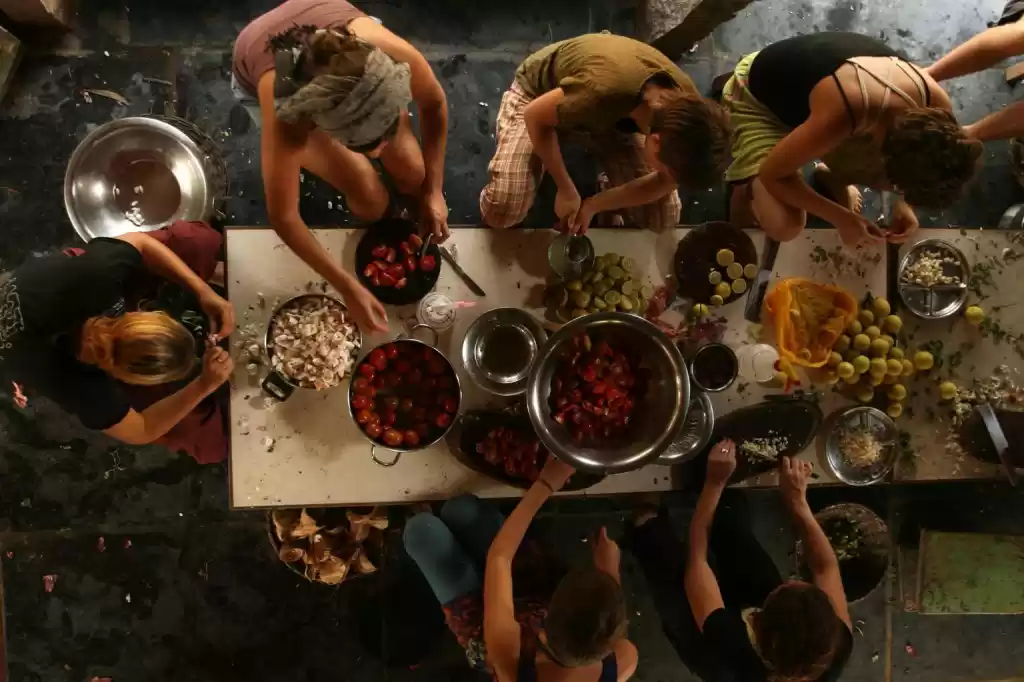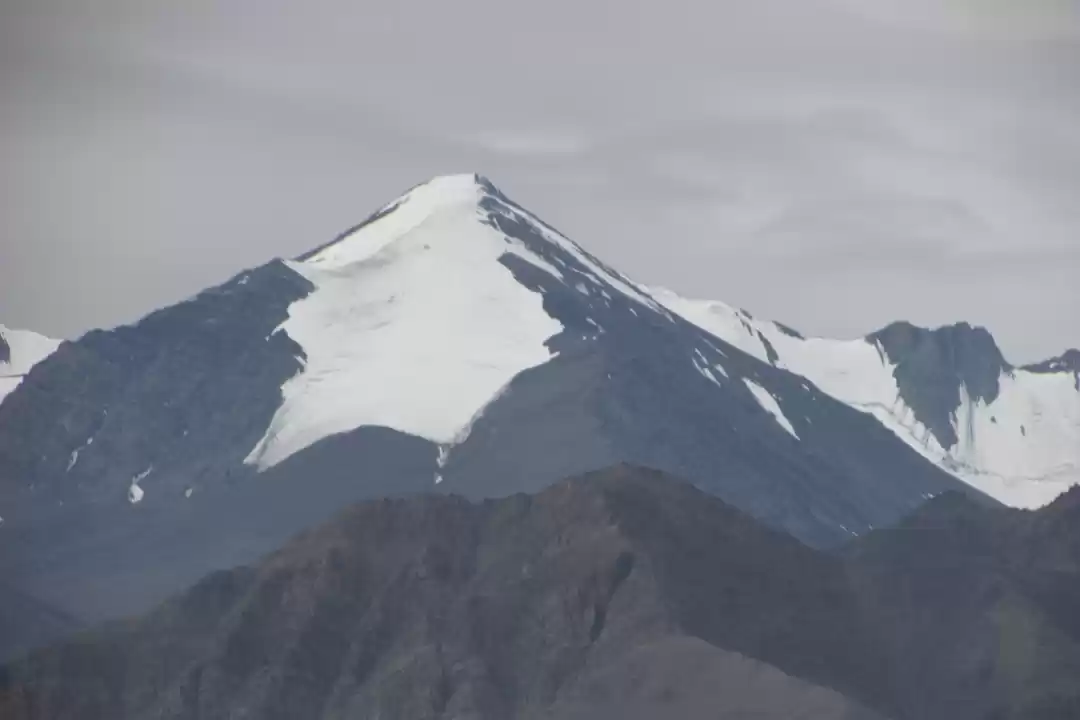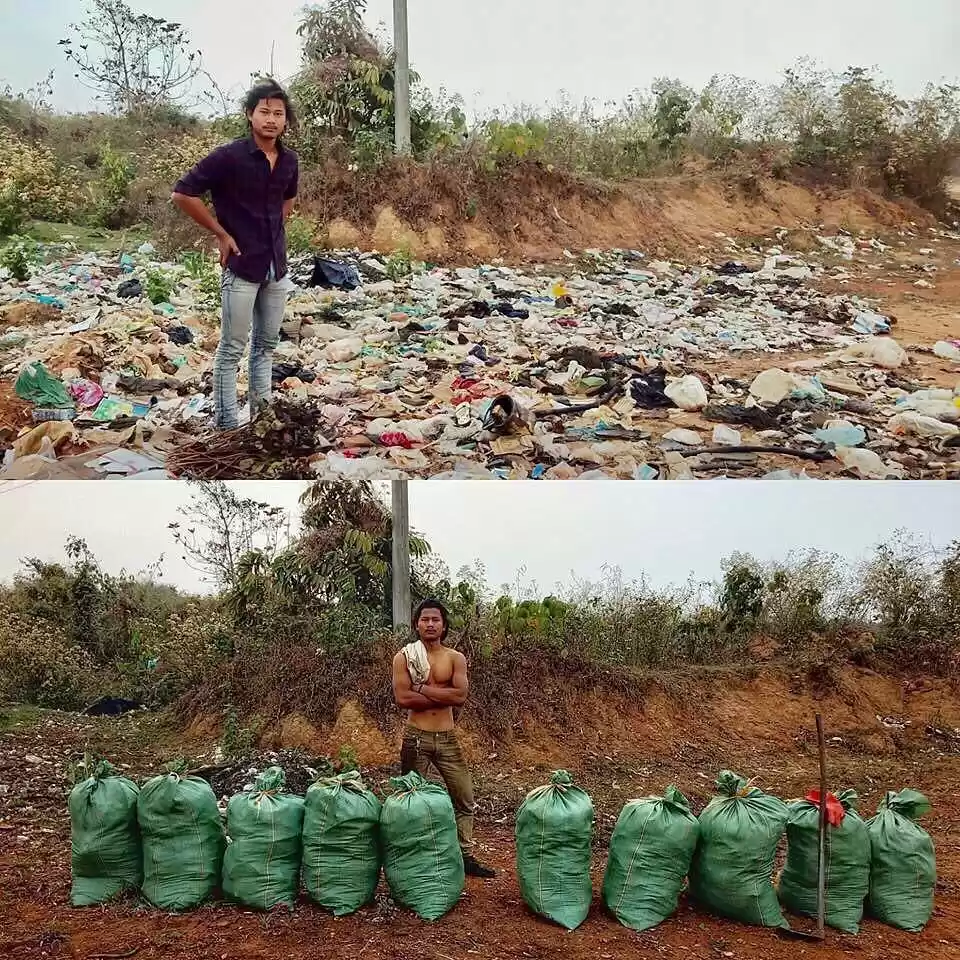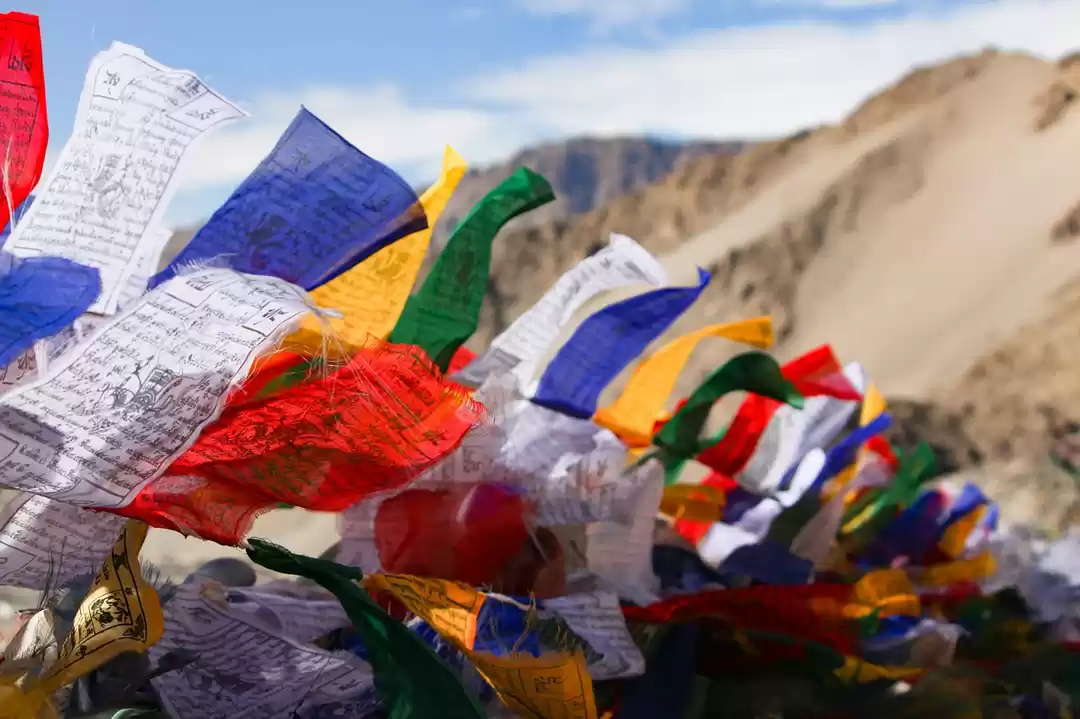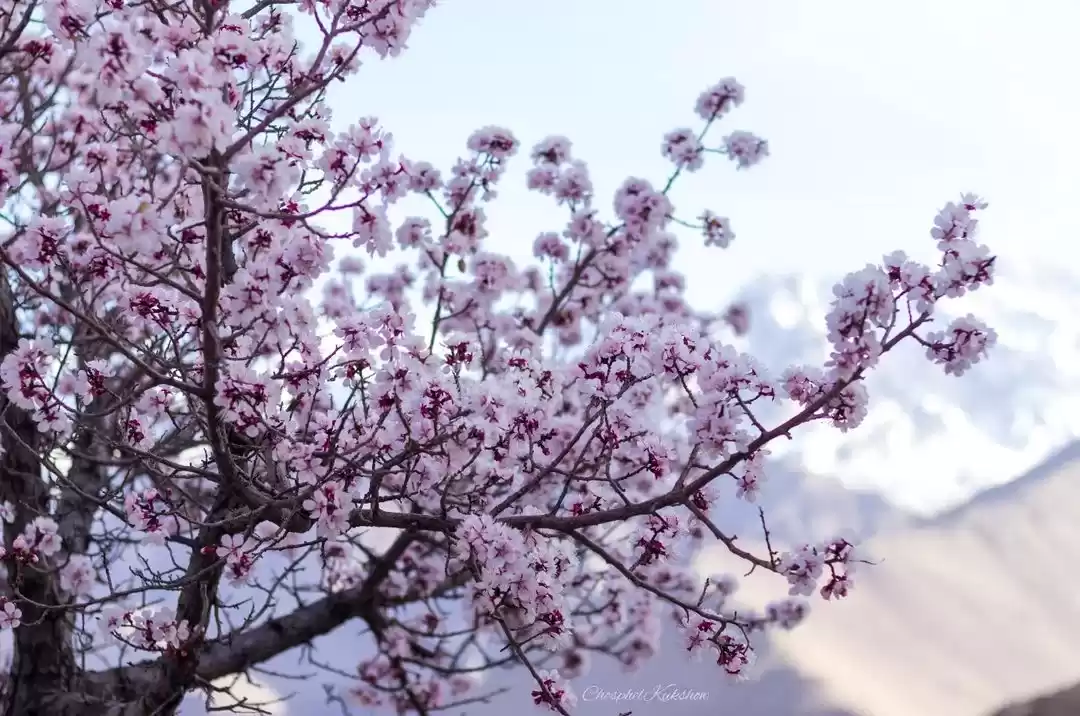A boom in tourism has led to the very many infrastructural and ecological problems that Ladakh faces currently, and you can make that out as soon as you enter the Leh Bazaar. It is crowded with tourists clicking pictures of fluttering prayer flags above them, the view from Leh Palace and Shanti Stupa has changed drastically, and the few houses in the bazaar have given way to a big settlement.

Statistics show that the number of tourists who visited Ladakh in 2003 were 28,393 and it drastically went up to 70,000 in 2008. Over 2,20,000 people visited Ladakh in 2016 – a whooping record that tolled heavy on the available resources in the region. But the inflow of people was unavoidable, ever since connectivity to Leh improved.
A small town coped with the burden of so many people, increasing pollution, and the region became ecologically unstable. Then came the 2010 flash flood, in which 255 people lost their lives. Nature was rebelling, but the warning went ignored.

But who does the fault lie with? Is it the tourists who want to visit this astonishing destination in their own land? Or the locals who use this period of tourism (just 6 to 7 short months) to earn money and make a living? I don't know.
What I know is that something needs to be done soon, if we want to restore the balance between nature and man. First, let's talk about the problems that have come up in Ladakh recently:

The largest protected land area in India has reduced drastically
Only until a few years ago, Ladakh had the maximum percentage of protected land area in India (15,000 square km), which was 15% of Jammu & Kashmir. Infrastructure has been greatly developed to accommodate as many people as is possible. Hotels have been built and more taxis have been bought in to make the experience blissful for guests. All such activities have squeezed the area of protected land. From its primary agriculture-related activities, Ladakh now focuses on tourism. The reason why this matters is because the land of Ladakh was home to many species of animal and plant life which needed protection. The biodiversity would not have survived in such extreme conditions, if they were not protected.
Extreme food shortage during winter
Today, most Ladakhis depend on rations that come from Kashmir during winter time. This is because the youth find it more viable to become a guide, taxi driver or a hotel owner than to become a farmer. Farming is costly, and the returns are not always guaranteed. Where as, the returns from tourism are instant because the number of tourists are multiplying every year. However, whenever there is a landslide or a road-blockage, there is severe food shortage, as ration cannot reach the people. To remedy this situation so the region can return to its self-sustainable roots, agricultural activities need be promoted on a large scale.
Leh is becoming the biggest dumping ground in Ladakh
During the summer season, many tourists come to Leh and with them comes a lot of solid waste that local authorities find difficult to manage. In fact, till some time ago, drainage pipes were directly being released into the river, and the solid waste was being burnt, exonerating green house gases that contributed to the damage done to the environment. Sometimes, trekking companies also buried waste in the ground.
However now, the government is in the process of constructing a major sewage treatment plant in Leh, and it should be functional soon. After the implementation of ecological and pollution-control policies, some trekking companies have also stopped leaving waste behind.

The role of various organisations which are working towards a healthier, sustainable environment in Ladakh:
Various non-governmental organisations such as WWF, Snow Leopard Conservancy, LAAS, Women Association Ladakh, SECMOL and the Ladakh Ecological Development Group have been working towards spreading awareness in Ladakh regarding solid waste disposal, renewable energy, creating environmental awareness programs and banning the use of plastic bags. Here is more about them in detail:
Women Association Of Ladakh
- The Women Association of Ladakh has been at the forefront of promoting the use of renewable energy in remote villages and banning the use of plastic bags. They have also, in collaboration with other organisations, helped renew traditional therapeutic practices promoted by doctors using ancient Tibetan and Ladakhi medicine.
- Creating village municipalities and panchayats in remote villages of Ladakh can help spread awareness amongst locals as well as monitor the disposal of waste being carried out in accordance with the law.

Ladakh Ecological Development Group
- The Ladakh Ecological Development Group works in projects related to creation of Highway Waste Disposal Committees, which can take the responsibility of keeping the highways clean and plastic-free. Tourists often dump their waste mid-way instead of carrying it till Leh, but maintaining cleanliness is the responsibility of the local authorities that needs fulfilment.
- They are encouraging the youth in Ladakh to return to farming, which will make the region self-sustainable again. They can take up farming as a parallel career in their villages and promote local dishes made of locally-grown vegetables and fruits. This will also lead to the furtherance of traditional Ladakhi culture, which is slowly fading away.

Students’ Educational and Cultural Movement of Ladakh (SECMOL)
Sonam Wangchuk, the founder of the Himalayan Alternatives University, the Ice Stupa project and SECMOL, encourages measures to improve the ecology of Ladakh and increase the participation of locals in agricultural activities by actively engaging villagers in his projects.

You can contribute by volunteering with these organisations. Here's how:
- You can volunteer with the Ladakh Ecological Development Group where working at the grass-root level with local authorities will help empower communities with food sovereignty, along with a stable eco-system.
- Volunteering options are also available at SECMOL, where local children especially those who are from unprivileged backgrounds and remote villages, are given the skills to create a sustainable future for themselves.
While locals along with NGOs continue to improve the current situation and save Ladakh from being termed as over-populated and touristy, many people from the rest of the country and abroad can also contribute to the cause as an individual.
If volunteering seems to be too time consuming for you, just do your bit by being a responsible traveller.
How you can contribute individually:
1. Opt for a homestay or an eco-friendly hotel for your next vacation here, in this way your impact in the region will be minimum.
2. Keep in mind that Ladakh is a cold desert, and for most Ladakhis, water is a luxury. Please use water mindfully. You can take baths every alternate day instead of everyday, like the locals do.
3. Do not buy bottled water. Carry a personal water bottle and keep re-filling it. There are going to be many streams coming out of melting glaciers on your way, and the water from such a source is pure and drinkable. Do not encourage products made of plastic in any manner.
4. If you are driving on your own, please do not go off-roading. Off-roading crushes the plants that grow near highways and villages. The entire Khardong region has about 150 varieties of documented medicinal plants that are highly valuable.
5. Do not drive your vehicle into or very close to the lakes and the rivers. These water bodies are considered holy by the Ladakhi people. Such violations upset their sentiments, and pollute the water body.
6. Carry all your garbage with you and dispose it off at a proper garbage disposal site in Leh. Don't throw it around, and if you can, avoid leaving it back in the village that you visited as it becomes difficult for them to dispose off it.
7. Promote 'Village Tourism' when you travel in Ladakh. Village tourism means you stay with a local family in the village, exactly like a homestay, and experience the everyday routine in a rural area. This encourages the villagers to host tourists, and promote the traditional culture while at the same time, puts off the need for commercial infrastructure.
If you love to travel then be mindful of the intricacies of travelling responsibly. Not just Ladakh, but many such places that were once in complete isolation are now in ecological turmoil, extremely vulnerable to climate change, and dealing with problems such as sewage disposal or waste management are unable to keep up with their growing popularity.
Let us not destroy Ladakh further, this coming season. Make a change, and leave a positive impact by your presence at this magnificent mountain kingdom.
Tell us your experience when you made an impact, and left a destination a little better than it was before you arrived!
















